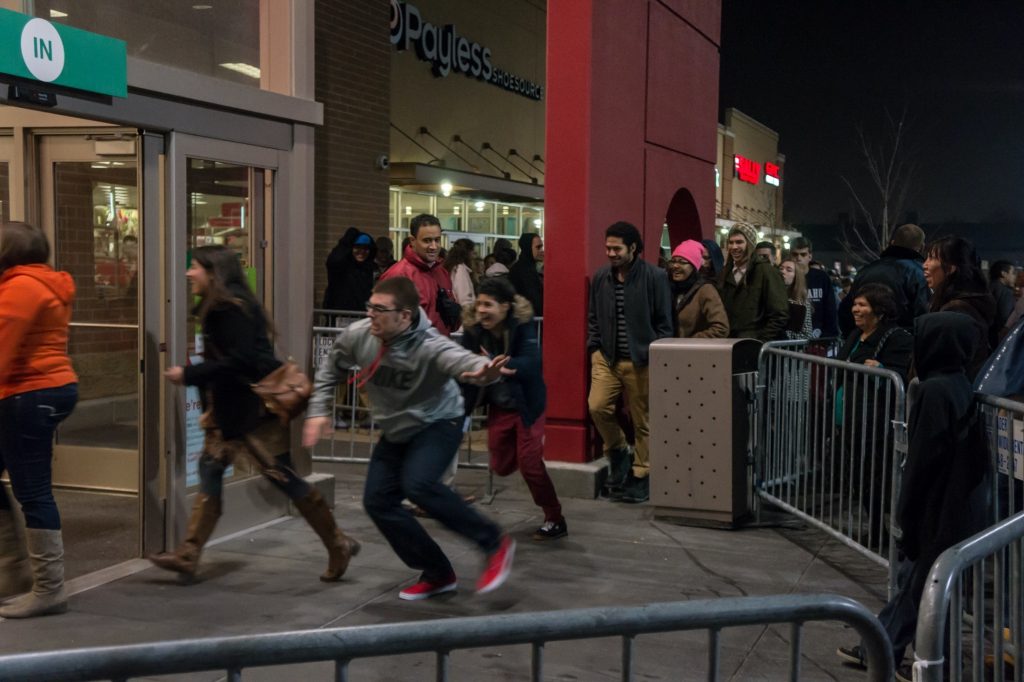Ville Vehmanen
This blog post was produced as part of the course “Social Media, Ideologies, and Ethics in the United States” at the University of Turku.

As our understanding of the looming ecological crisis has increased, consumption has become, at least ideologically, more and more problematic. Before and during Black Friday in 2019, in addition to all the advertising, opposing opinions were also heard. Moreover, there were an increasing number of retailers who chose to close their shops, donate to charity, or simply encourage their customers to refrain from superfluous spending. But where does journalism stand in all of this? What did newspapers write? And could social media, such as Twitter really expose how people think and behave?
For the sake of framing, I decided to concentrate on The New York Times and Twitter. I did a search on the New York Times website to see what they wrote this year about Black Friday and searched Twitter for tweets with the hashtag #BlackFriday and more than 1000 likes. This allowed me to focus on the tweets that had gotten most recognition. My hypothesis? I would imagine that traditional media, like The New York Times, would embrace the ethos of consumption and that the anti-movements would operate on social media. Let’s see what I discovered!
Surprisingly, the articles on The New York Times were mostly critical towards the holiday and at best, or worst, offered readers advice on how to avoid bad products and deals. The newspaper ran a traditional “What You Need to Know” type of article that offered the readers an overview of the top items for sale and how much people are spending, but also questioned the consumerist approach to the post-Thanksgiving period. In the tech section, Brian X. Chen wrote about the worst tech gifts he had received and gave his dos and don’ts of tech shopping. It would be fair to say this article had an environmental undertone to it since buying less but better is always better for the environment as well. Probably the most positive article towards shopping was Tammy La Gorce’s piece on buying a wedding dress, utilizing Black Friday deals. In it, she went through various bridal clothing retailers to get a sense of what was available.
In addition to these hands-on articles, the New York Times did publish a couple of interesting stories that dealt with the hidden side of Black Friday. First of all, they wrote about the unsung heroes of this massive retail effort; the stockroom worker, the social media influencer, the luggage salesman, and the industrious robot. Vanessa Friedman, fashion director of The Times, questioned the meaning of Black Friday in her column “What Does ‘Black Friday’ Even Mean Anymore?” Black Friday has extended from a one-day event to nearly a month of offers, and Friedman called for a change. She argued that the shared excitement that used to be the core of Black Friday has been lost in the digitized world.
What about social media? How did the Twittersphere react to last year’s Black Friday? The popular tweets can be categorized into three groups: promotion, memes, and awareness. Many celebrities, like Khloe Kardashian, Jeffree Star, and Elizabeth Hurley, took to Twitter to promote their goods and Black Friday deals. As always, social media thrives on humor, so various memes went viral over the holidays, such as the comedian Trevor Noah’s video of a man running on a treadmill with a shopping cart, training from Black Friday madness. The top tweet, which falls under this category, was from none other than God:

In the end, the criticism towards Black Friday and the raising of awareness that I expected were there, but not to the extent I imagined. The English actress Amanda Abbington simply tweeted, “You don’t need anything” and Muireann O’Connell, the Irish tv show host, tweeted as follows:

But to be honest, on a larger scale, criticism towards mass consumption or Black Friday was simply not found on Twitter. So, I was wrong with my hypothesis. What could explain this? First of all, I might myself live in a social media filter bubble where people I follow are against superfluous consumption. Secondly, Black Friday is much larger in the United States than in Finland and its historical roots and its importance can be difficult to understand from our perspective. Thirdly, Twitter, as most social media platforms, is American, and thus the consensus on consumerism and the importance of Black Friday differs from how we see it in Scandinavia. Finally, I simply did a search with one hashtag and focused on the most liked posts, so this really doesn’t give you a realistic understanding of the general conversation. Yet, it was fun and at least I tried to shed some light on this crazy business!

very nice difference